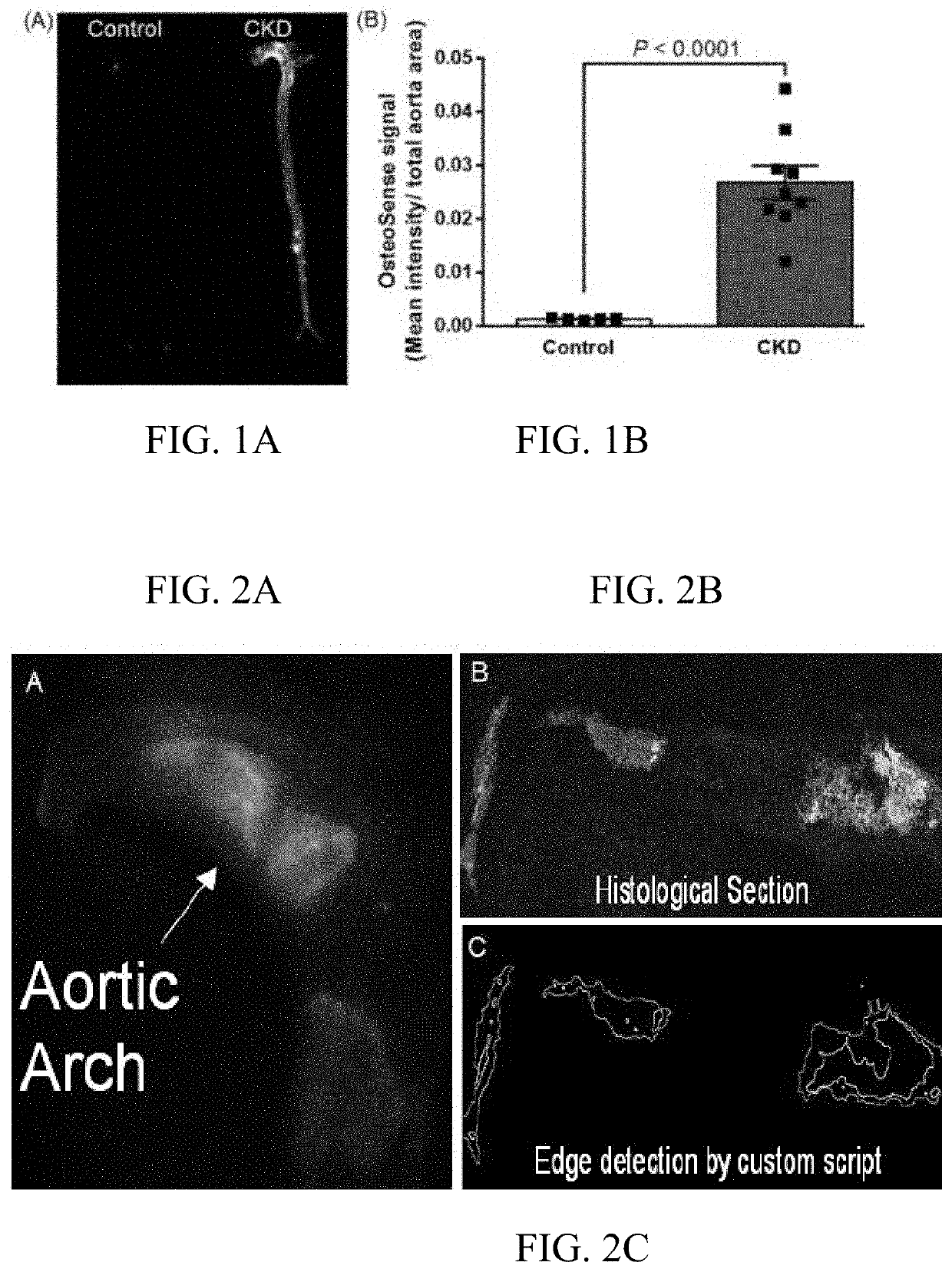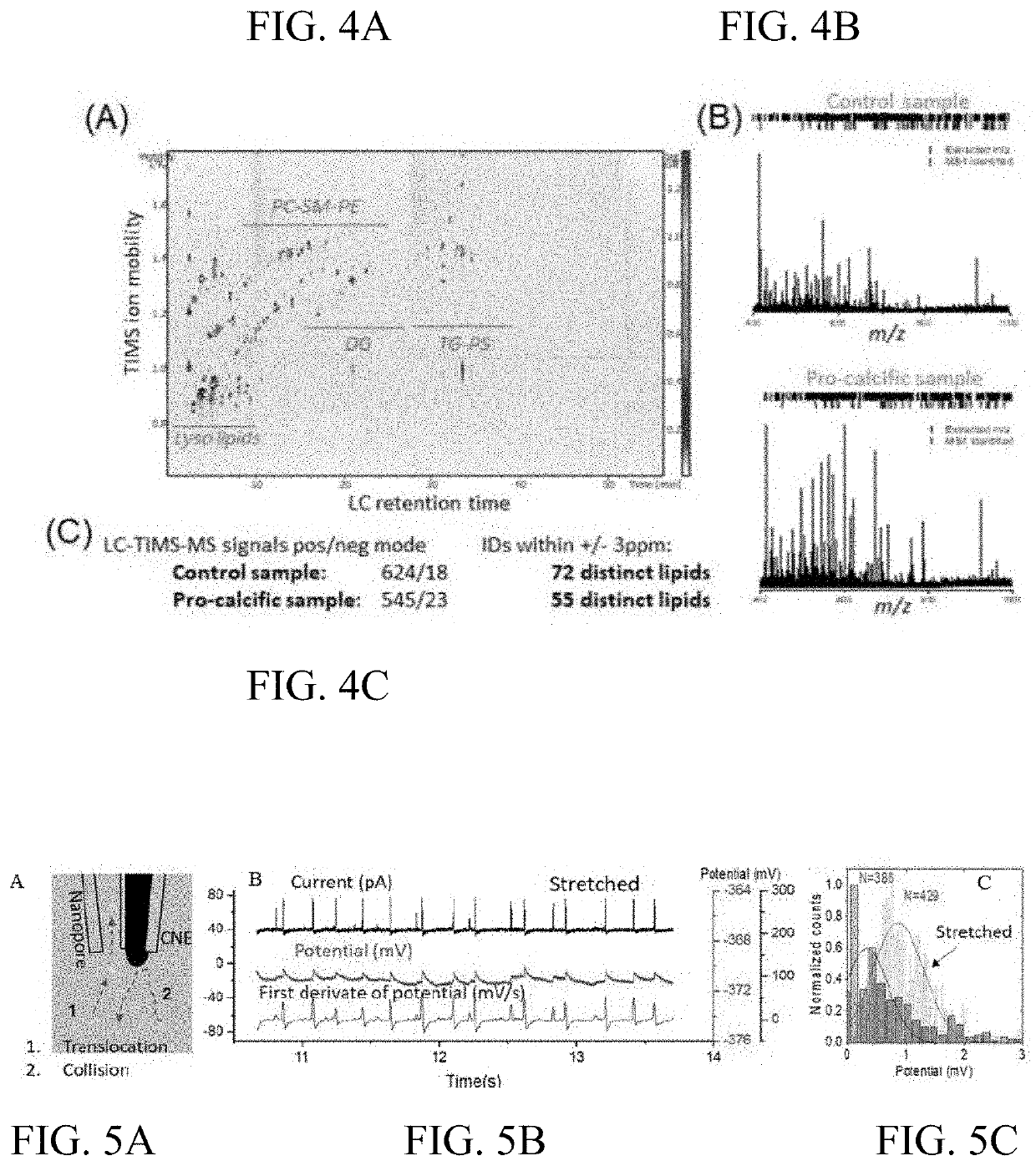Materials and methods for the treatment of vascular calcification
a technology of vascular calcification and materials, applied in the field of materials and methods for the treatment of vascular calcification, can solve the problems of reducing the elasticity of the vascular wall, heart attacks and strokes, atherosclerotic plaque rupture, etc., and achieve the effect of preventing or reducing the formation of calcification evs
- Summary
- Abstract
- Description
- Claims
- Application Information
AI Technical Summary
Benefits of technology
Problems solved by technology
Method used
Image
Examples
example 1
of SMC Caveolin-1 in CKD Mineralization
[0125]Causal mechanisms associated with EV-based mineralization are difficult to study in vivo. To demonstrate the relevance of caveolin-1 in SMC-driven calcification in vivo, tamoxifen-inducible SMC-specific caveolin-1 deficient mice (SMMHC-CreERT2+ / Cav1Δ / Δ) fed an adenine and high phosphate diet were used to induce CKD, to disrupt calcifying EV formation in vivo and to assess the effects on SMC-driven medial calcification in the context of CKD.
[0126]The mechanistic studies that alter EV formation in vivo and show changes to mineral formation in the vascular wall demonstrated the degree to which these EVs participate in calcification. The data suggest a role for caveolin-1 in the formation of calcifying EVs and SMC-driven calcification.
[0127]Eight-week old SMMHC-CreERT2+ / Cav1fl / fl mice receive daily intraperitoneal injections of either peanut oil (vehicle control) or tamoxifen (1 mg / kg) for two weeks. Following the final injection, mice receiv...
example 2
g EVs Form and Derive Lipid Properties from SMC Caveolae
[0134]EVs released in pro-calcific conditions have physicochemical properties derived from SMC caveolae. The lipid content of EVs and SMC caveolae is compared. The size and charge properties of calcifying EVs and SMC caveolae are assessed.
[0135]Calcifying EVs build mineral in atherosclerotic plaques, and calcifying EV formation requires the presence of caveolin-1. Negatively charged phosphatidylserine increases the rate of mineral formation by immobilizing calcium ions on the membrane of calcifying EVs.
[0136]Phosphatidylserine plays a critical role in caveolae formation and trafficking. Calcifying EVs derive from caveolae, providing a phospholipid composition that aids in mineral formation.
[0137]Mass spectrometry is used to compare the lipidomic profiles of EVs isolated from the aortae of the four mouse groups discussed above. The EVs are extracted after 2 weeks of the high phosphate diet, when medial calcification has begun bu...
example 3
Analyses of EVs and Caveolae-Enriched Membrane
[0148]A mass spectrometry lipidomics workflow is used to compare the tissue isolated EVs, in vitro derived EVs, and SMC caveolae. Lipid content of isolated EVs and caveolae are extracted using an established methyl-tert-butyl ether (MTBE) protocol. The extracted lipids are then analyzed using liquid chromatography coupled to trapped ion mobility spectrometry-mass spectrometry (LC-TIMS-MS). LC-TIMS-MS separates lipids in three dimensions: retention time (LC), ion mobility (TIMS) and mass-to-charge ratios (m / z, MS). Lipids group into typical retention time and ion mobility windows. Their identity can then be obtained from their measured m / z using database searches (LIPID MAPS Lipidomics Gateway database, Simlipid (PREMIER Biosoft) and Metaboscape (Bruker)).
[0149]MS-based quantitation is performed using the addition of internal standards before the lipid extraction. The added internal standard is made up of a mixture of deuterated lipids fr...
PUM
 Login to View More
Login to View More Abstract
Description
Claims
Application Information
 Login to View More
Login to View More - R&D
- Intellectual Property
- Life Sciences
- Materials
- Tech Scout
- Unparalleled Data Quality
- Higher Quality Content
- 60% Fewer Hallucinations
Browse by: Latest US Patents, China's latest patents, Technical Efficacy Thesaurus, Application Domain, Technology Topic, Popular Technical Reports.
© 2025 PatSnap. All rights reserved.Legal|Privacy policy|Modern Slavery Act Transparency Statement|Sitemap|About US| Contact US: help@patsnap.com



